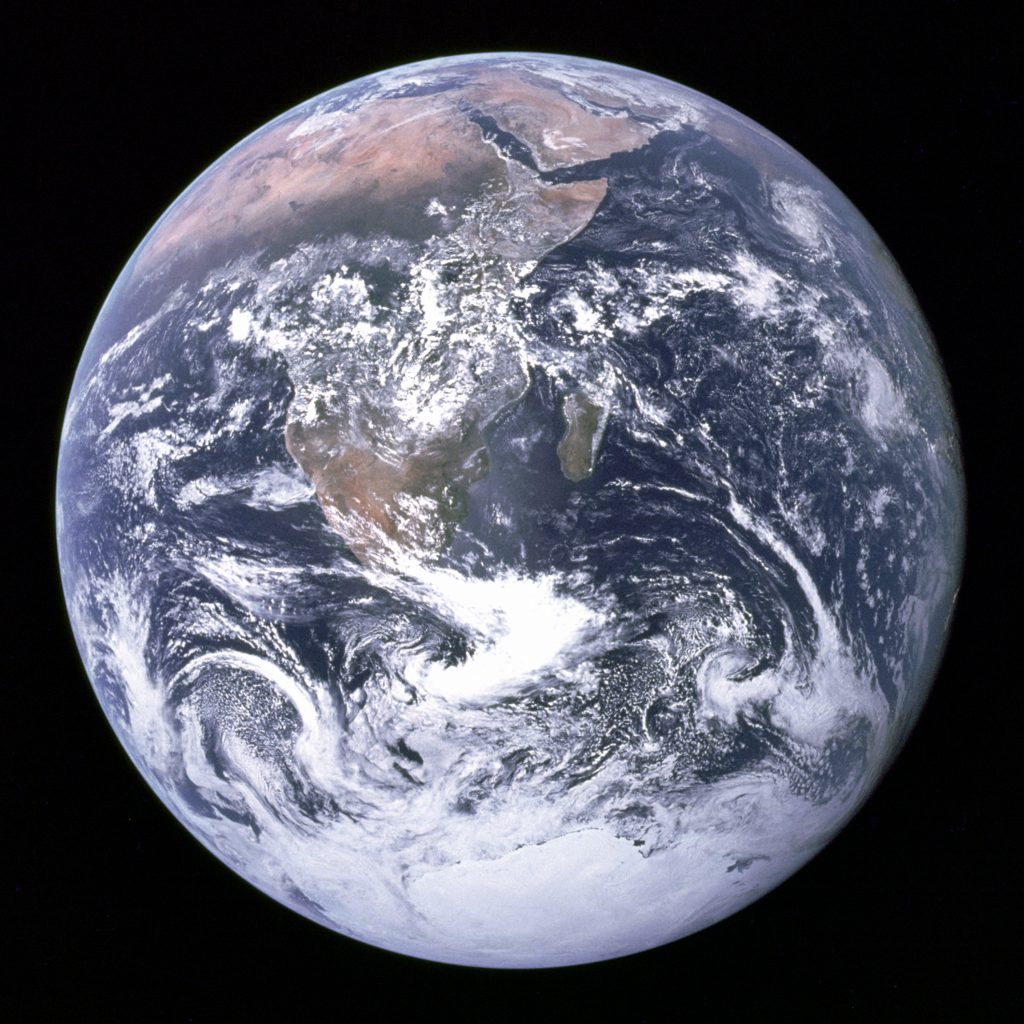
Every year, Earth Day affords an opportunity for us to collectively take stock of our relationship with the environment. The first Earth Day fifty years ago is the result of one such stock-taking. Environmentalists were inspired by the “Blue Marble” photo — an image which still reverberates through Western culture with nearly the same potency as when it was first viewed. About this photograph, Ursula K. Heise writes:
Set against a black background like a precious jewel in a case of velvet, the planet here appears as single entity, united, limited, and delicately beautiful. Thinkers as diverse as media theorist Marshall McLuhan and atmospheric scientist James Lovelock were deeply influenced by images such as this one; neither McLuhan’s notion that the world had turned into a global village nor Lovelock’s Gaia hypothesis of the Earth as a single superorganism can be dissociated from its impact.
Ursula K. Heise, Sense of Place and Sense of Planet
The “Blue Marble” photograph inspired a globalist perspective shift, which comes with both positive and negative ramifications for environmentalist culture. One one hand, the globalism inspired by the “Blue Marble” makes tangible the sense that we all exist together on one planet. Seeing the ecosystem of the entire Earth — visible in the way the clouds curl across the atmosphere or the ways ocean currents stretch from one continent to another — makes connection real. On the other hand, connection does not indicate sameness. The cultural shift inspired by the “Blue Marble” was an erasure as much as it was a widening of perspective. We do not experience our environments in the same way. We do not all have equal access to the Earth.
What perspective can Earth Day afford us now, during these quarantine-times, when the view of our planet is less from the porthole of a spaceship in orbit and more from a closed front door or an apartment balcony? The view is certainly less expansive these days.
But maybe it is a good time to take a step back from the globalist viewpoint and pay attention to environments close to home. To examine the ways we interact with environments in our own cities, in our own homes. To think of our relations with humans and non-humans alike and consider how our connections on a small scale can be shifted toward sustainability not only in an environmental sense but in all the ways that we relate.
